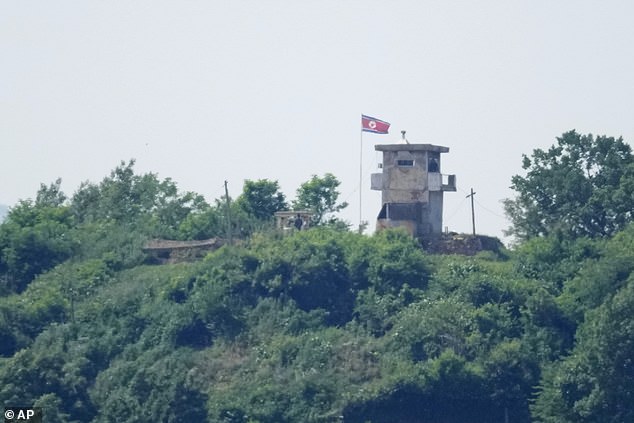South Korean troops were forced to fire warning shots after a contingent of 20 North Korean soldiers briefly crossed the border this week, Seoul’s military said this morning in the latest escalation of tensions along the line.
The worrying raid on the line separating the two armies took place in a brush-covered area of the heavily fortified border area.
Relations between the two Koreas – still technically at war since the 1950-1953 conflict ended in an armistice rather than a peace treaty – are at one of their lowest points in years.
In recent weeks, the North has sent hundreds of balloons filled with garbage and feces to the South, while Seoul has installed loudspeakers along the border to broadcast propaganda against Kim Jong Un in Cold War-style campaigns.
“Some North Korean soldiers working inside the DMZ on the central front briefly crossed the Military Demarcation Line (MDL),” the Joint Chiefs of Staff said in a statement, referring to the line of control between the two Koreas.
“After our military issued warning broadcasts and warning shots, they withdrew to the north,” he said.
North Korean soldiers stand near their military guard post as a North Korean flag flutters in the wind, seen from Paju, South Korea, Sunday, June 9, 2024.
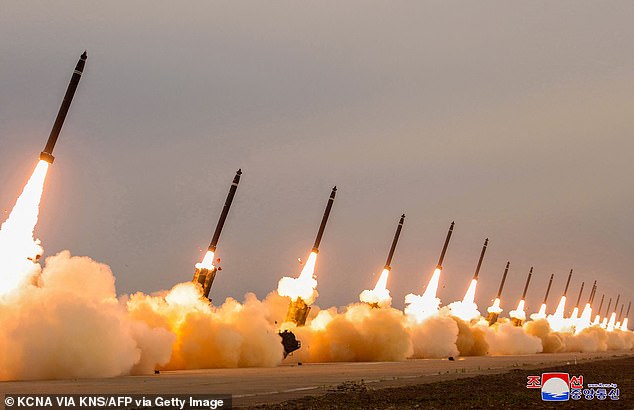
This photograph taken on May 30, 2024 and published by North Korea’s official Korean Central News Agency (KCNA) via KNS on May 31, 2024 shows the artillery test launch of 600mm super-large rocket at an unconfirmed location in North Korea.
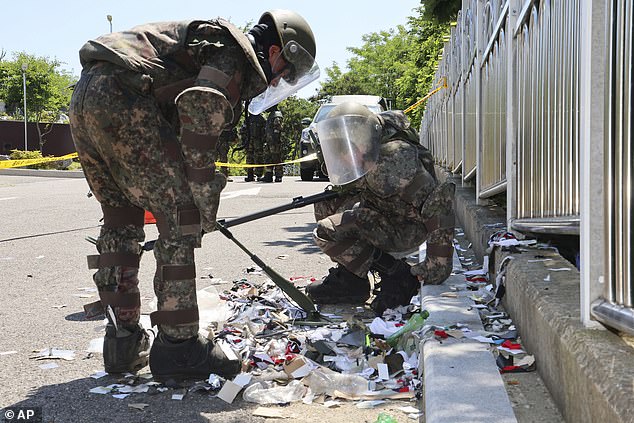
South Korean soldiers in protective gear sift through garbage from a balloon presumably sent by North Korea, in Incheon, South Korea, June 2, 2024.
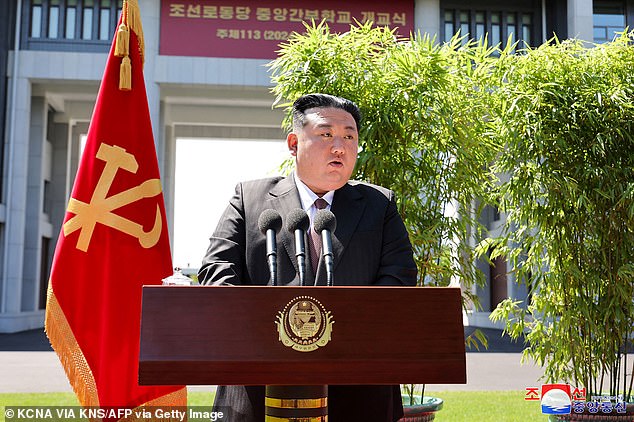
This photo taken on June 1, 2024 and released by North Korea’s official Korean Central News Agency (KCNA) via KNS on June 2, 2024 shows North Korean leader Kim Jong Un speaking while attending the ceremony inauguration of the School for Central Staff Workers. ‘Party of Korea (WPK) in Pyongyang
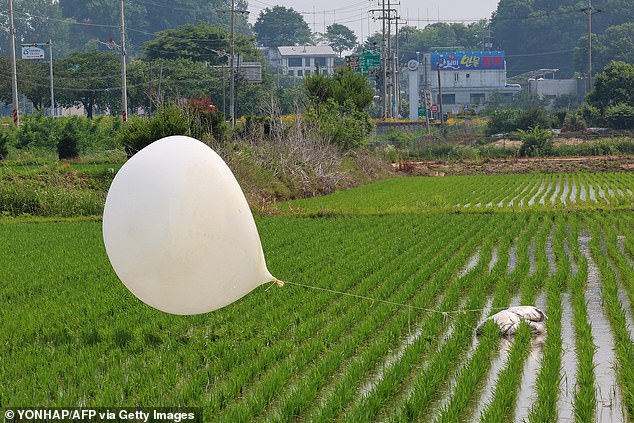
A balloon is seen attached to an object (R) after it landed on a rice field in Seonwon-myeon, Ganghwa county, Incheon city, June 10, 2024.
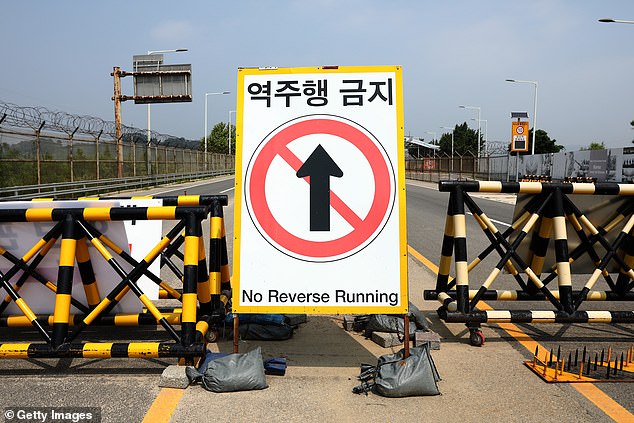
Barricades are set up near the Unification Bridge, which leads to Panmunjom in the Demilitarized Zone (DMZ) on June 11, 2024 in Paju, South Korea.
The raid was probably accidental, JCS spokesman Lee Sung-joon told reporters on Tuesday.
“The situation at that time was that the DMZ was now covered with trees and the MDL marking was not clearly visible,” Lee said.
‘There was no road, and the (North Korean soldiers) were moving through the bushes, and we were watching them even before they approached the MDL.
“We believe they had no intention of invading, considering they immediately headed north after the warning transmissions and shots.”
In recent weeks, North Korea has sent more than a thousand balloons loaded with trash, including cigarette butts and used toilet paper, southward, in response, it says, to anti-Pyongyang propaganda balloons sent north by activists. .
In response, the South Korean government suspended a military agreement to reduce tensions in 2018 and restarted propaganda broadcasts over loudspeakers along the border, angering the North, which warned that Seoul was creating “a new crisis.”
North Korea may be reinstalling its own loudspeakers along the border, Seoul’s military said on Monday, a tactic it had used since the 1960s but discontinued in 2018.
Seoul’s spy agency said Tuesday it had also detected signs that Pyongyang was demolishing sections of the inter-Korean railway.
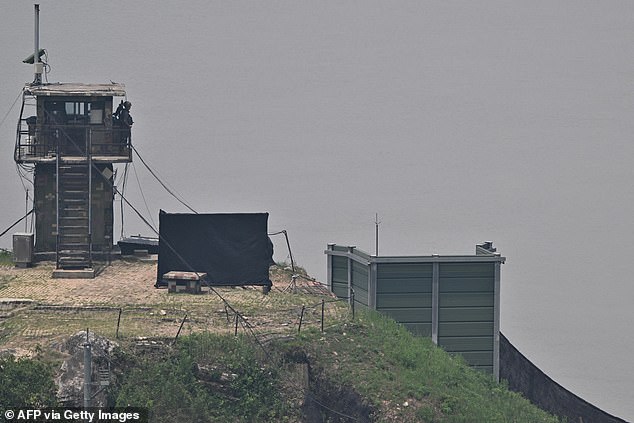
A South Korean soldier stands guard near a military facility where loudspeakers used to be dismantled in 2018, near the demilitarized zone separating the two Koreas in Paju on June 11, 2024.
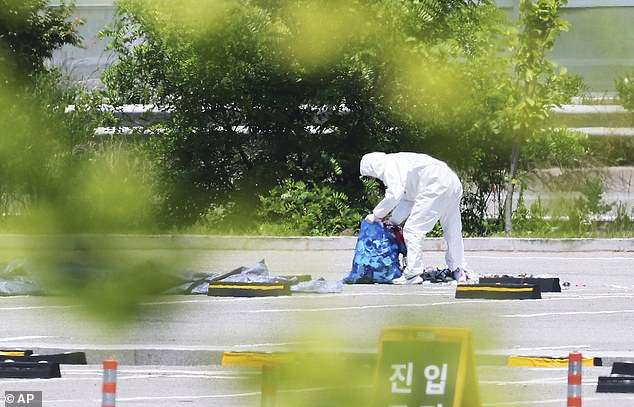
An officer in protective gear collects trash from a balloon presumably sent by North Korea, in Siheung, South Korea, Sunday, June 2, 2024.
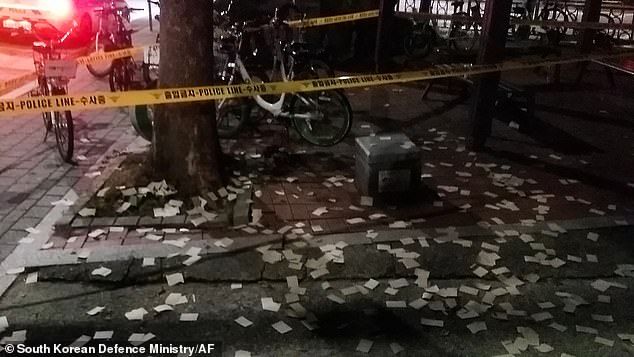
This photo taken on June 9, 2024, and provided by South Korea’s Defense Ministry, shows unidentified objects believed to be North Korean garbage from balloons that crossed the inter-Korean border, on a street in Seoul.
The incursion by North Korean soldiers could be a “small provocation” to test the waters before a bigger action, Ahn Chan-il, a defector turned researcher who heads the World Institute for North Korea Studies, told AFP.
“It can also be seen as part of (the regime’s chief spokesperson and Kim Jong Un’s sister) Kim Yo Jong’s preparation for what she described as ‘new countermeasures,'” he added.
Pyongyang has previously threatened artillery strikes against speaker units.
South Korea’s loudspeaker broadcast on Sunday included news segments on Seoul’s decision to suspend the 2018 military agreement along with a report on the global sales performance of Samsung Electronics’ smartphones, according to the news agency. Yonhap.
It also played songs by K-pop sensation BTS, Yonhap said.
Anti-Kim Jong Un leaflets aside, North Korea is also extremely sensitive to its people gaining access to South Korea’s burgeoning popular culture.
According to a United Nations report, Pyongyang enacted a law in 2020 to punish anyone who possesses or distributes large amounts of South Korean media content with life imprisonment or even the death penalty.
Experts have warned that the decision to scrap the 2018 deal and restart loudspeaker broadcasts could have serious implications, as previous tit-for-tat propaganda actions have had real-world consequences for inter-Korean relations.
In 2020, Pyongyang, blaming anti-North leaflets, unilaterally cut all official military and political communication links with the South and blew up an inter-Korean liaison office on its side of the border.


